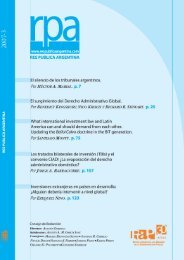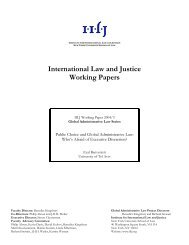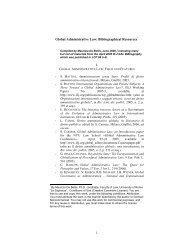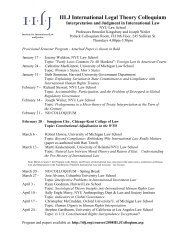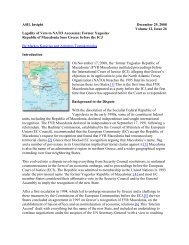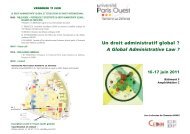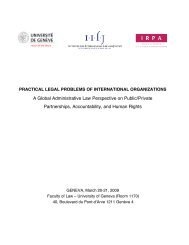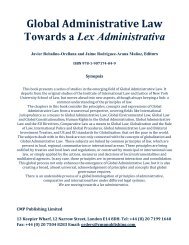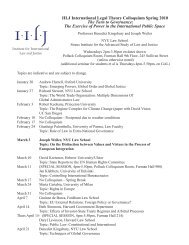International Law and Justice Working Papers - IILJ
International Law and Justice Working Papers - IILJ
International Law and Justice Working Papers - IILJ
You also want an ePaper? Increase the reach of your titles
YUMPU automatically turns print PDFs into web optimized ePapers that Google loves.
to more developed natural sciences) have at all acquired paradigms 11 , he has suggested that<br />
especially in social sciences the new “external” (contextual) historiography promises new<br />
valuable insights. 12<br />
2. The General Outline of the Case: the Baltics as Borderl<strong>and</strong><br />
For underst<strong>and</strong>ing the international legal arguments of Bulmerincq, one needs to underst<strong>and</strong> his<br />
specific Baltic German background, <strong>and</strong> the historical “condition” at his first home university,<br />
Dorpat (Tartu), Estonia. The geopolitical constant of Estonia has been its role as borderl<strong>and</strong>.<br />
Throughout centuries, Estonia has been a politically <strong>and</strong> culturally contested territory between<br />
diferent powers, most notably the Germans <strong>and</strong> the Russians. This feature can be demonstrated<br />
with a brief outline of the history of the university of Dorpat/Iur'ev/Tartu. The university was<br />
established by one of the most important actors in the 30-years war (1618-1648) that led to the<br />
peace of Westphalia which is largely considered as the starting point of modern State system <strong>and</strong><br />
international law. The Swedish king Gustavus II Adolphus signed the orders for the<br />
establishment of a university in Dorpat in 1632, just before a battle he led on the soil of Germany<br />
during the 30-years war. The university of Dorpat was modeled after the oldest Swedish<br />
university, Uppsala. The context of the university's foundation was significant. As is well known,<br />
the 30-years war was led about the religious freedom <strong>and</strong> dominance in Europe divided by the<br />
Catholics <strong>and</strong> the Protestants. The establishment of the university in Dorpat by the king Gustavus<br />
II Adolphus can be seen in the light of this ongoing religious conflict. The Poles had established<br />
a Catholic seminar in Vilnius, Lithuania, in 1579 <strong>and</strong> the Swedish king, an ardent Protestant was<br />
concerned about the seminar's undue intellectual influence in the region. Therefore, Academia<br />
Gustaviana in Dorpat was established as Protestant counterweight to the Catholic university in<br />
11 Thomas S. Kuhn, The Structure of Scientific Revolutions, 2 nd ed., University of Chicago Press, 1970 (1 st ed. 1962),<br />
p. 15.<br />
12 Thomas S. Kuhn, The Essential Tension. Selected Studies in Scientific Tradition <strong>and</strong> Change, p. 112-113.



